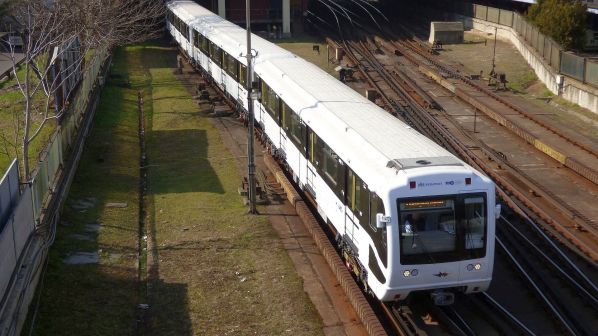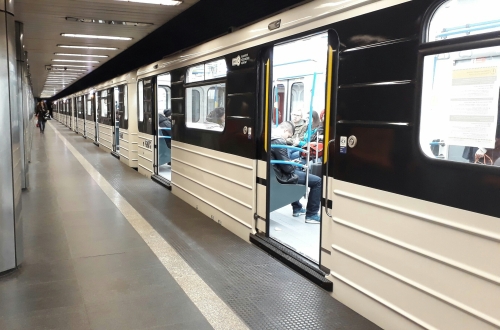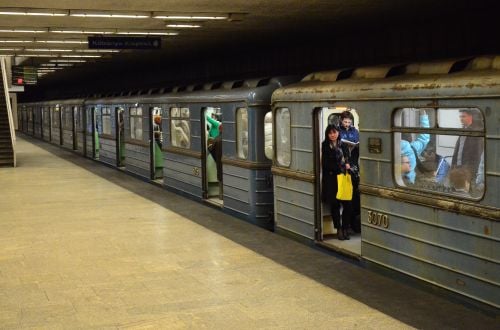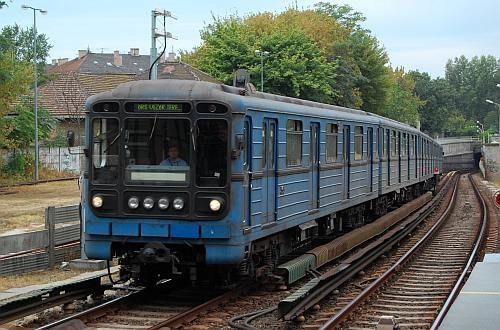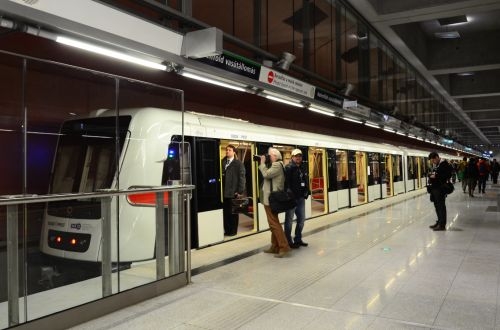BUDAPEST Metro M3 Blue Line has been reopened to passengers following a Forints 225bn ($US 650.7m) renovation project which began in November 2017.
The reopening of the city’s longest line took place on May 22 and the 17.4km line is now expected to carry over 500,000 passengers per day. The renovation project has benefited from €453m in European Union (EU) 2014-2020 cohesion programme funding, making it one of the EU’s biggest investments in Hungary and across Europe as a whole.
As part of the project all of the line’s 20 stations have been refurbished and made fully accessible, with conventional lifts installed at the majority of the stations, as well as specially inclined elevators installed at Semmelweis Klinikák, Corvin-negyed, Kálvin tér, Ferenciek tere, Nyugati pályaudvar and Arany János utca stations.
The refurbishment scheme has also seen the introduction of new 80km/h trains, relaying of track, installation of power cables “long enough to reach as far as Barcelona,” according to the project team, and renovation of around 32,000m² of floor paving, including installation of tactile paving for the benefit of the visually impaired.
Other work has included installation of LED lighting, 300 centrally controlled clocks, 180 visual signs and 2060 loudspeakers. Safety features include new control, conductor, fire protection and ventilation systems and installation of around 340 emergency call points, 160 monitors and 500 internet protocol cameras ensuring CCTV coverage.
In his speech welcoming completion of the project Budapest mayor, Mr Gergely Karácsony, thanked the government, the EU, the people involved in the project and the patience of the travelling public during the five and a half years of renovation work. He said the reconstruction of the metro line had posed a big challenge for the city, but he hoped that when people used the renewed, accessible metro, they would think it worth the wait.
The project could not have been completed without government support, he said, adding that "here too I would like to urge the Hungarian government to settle its disputes with the European Union so that the funds can arrive in Hungary".
The reference relates to long-running tensions between the EU and Hungary’s prime minister, Mr Viktor Orbán, over his government’s delayed adoption of rule-of-law reforms, with Brussels withholding funding amounting to billions of euros until meaningful progress has been made.
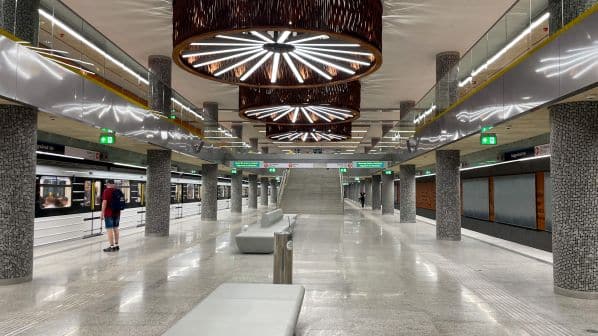
“The Cohesion Policy Funds will continue supporting a sustainable and smart mobility development in Hungary,” the EU said in its announcement welcoming the Line 3 inauguration, which also stressed the need for implementation of government policies seen as EU priorities. “Pending lifting of the [European] Council implementing decision under the conditionality mechanism… the new Integrated Transport Development Operational Programme Plus will improve sustainable and safer mobility in Hungary with a budget of more than €3.5bn. Under this programme, the Cohesion Fund will make €1.1bn available for sustainable urban mobility. This includes renovating or building 45km of light rail and metro lines and the procuring of 51 LRVs for Budapest.”
The three-phase Line 3 renovation project started on November 6 2017 with the closure of the northern section between Újpest-központ and Dózsa György út stations, which was reopened to passengers on March 30 2019. Renovation of the southern section between Népliget and Kőbánya-Kispest stations took place from April 6 2019 to October 22 2020. In parallel, the reconstruction of the middle section between Lehel tér and Nagyvárad tér stations started in March 2020 at Arany János utca and Ferenciek tere stations (LINK to IRJ November 9, 2020 story).
For detailed data on metro projects in Europe and around the world, subscribe to IRJ Pro.

